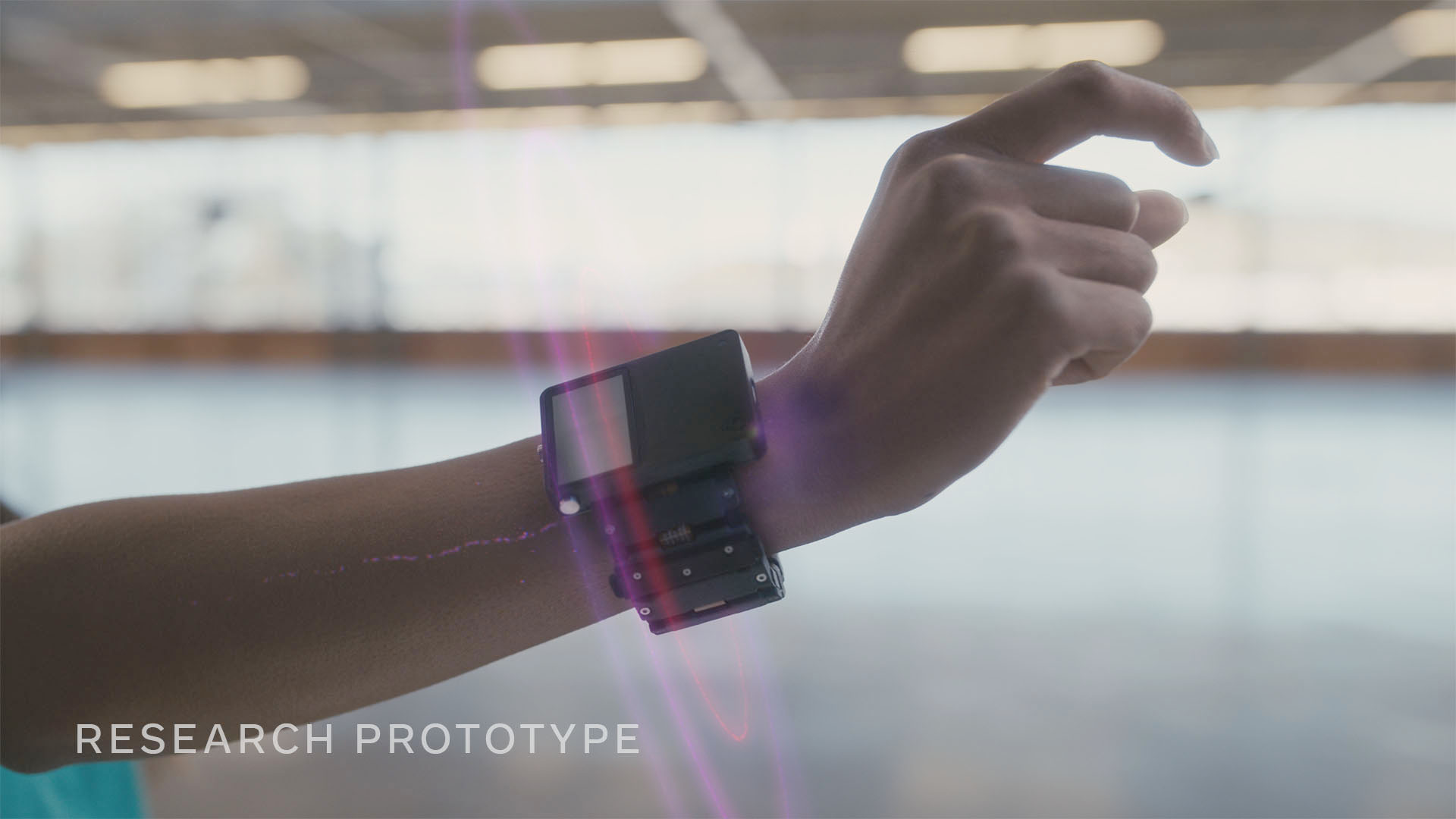Facebook is making a bracelet that lets you control computers with your brain
The device would let you interact with Facebook’s upcoming augmented-reality glasses just by thinking.

Facebook says it has created a wristband that translates motor signals from your brain so you can move a digital object just by thinking about it.
How does it work? The wristband, which looks like a clunky iPod on a strap, uses sensors to detect movements you intend to make. It uses electromyography (EMG) to interpret electrical activity from motor nerves as they send information from the brain to the hand. The company says the device, as yet unnamed, would let you navigate augmented-reality menus by just thinking about moving your finger to scroll.
A quick refresher on augmented reality: It overlays information on your view of the real world, whether it’s data, maps, or other images. The most successful experiment in augmented reality was Pokémon Go, which took the world by storm in 2016 as players crisscrossed neighborhoods in search of elusive Pokémon characters. That initial promise has faded over the intervening years, however, as companies have struggled to translate the technology into something appealing, light, and usable. Google Glass and Snap Spectacles bombed, for example: people simply did not want to use them. Facebook thinks its wristband is more user friendly.
Does it work the way Facebook claims? Too soon to tell. The product is still in research and development at the company’s internal Facebook Reality Labs, and I didn’t get to have a go. No word yet on when it will be released or how much it will cost, either.
Years in the making: Facebook acquired startup CTRL-labs in September 2019 for between $500 million and $1 billion. CTRL had been working on its own wrist-based EMG device, and its head, Thomas Reardon, who is now the director of Neuromotor Interfaces at Facebook Reality Labs. At the press preview, Reardon said the device was “not mind control.” He added, “This is coming from the part of the brain that controls motor information, not thought.”
The AR play: The announcement is the second in a series of three that have been planned to set out the company’s position in augmented reality. On March 9, Facebook announced that its glasses would be responsive to immediate surroundings—walking past your favorite coffee shop might trigger the glasses to ask if you want to place an order. Facebook says it will reveal its own haptic gloves and other wearables later this year.
Another privacy pitfall? Facebook’s founder, Mark Zuckerberg, has aggressively invested in augmented and virtual reality, recognizing that products like these can mean access to countless valuable data points. In the café example above, the company (and therefore advertisers) could find out what kind of coffee you prefer, where you live, and, by statistical deduction, your demographic, health, and other personal information. And given the company’s history with regard to privacy, there’s some reason to be skeptical.
Editor's note: We have amended Reardon’s job title.
Keep Reading
Most Popular
How scientists traced a mysterious covid case back to six toilets
When wastewater surveillance turns into a hunt for a single infected individual, the ethics get tricky.
The problem with plug-in hybrids? Their drivers.
Plug-in hybrids are often sold as a transition to EVs, but new data from Europe shows we’re still underestimating the emissions they produce.
Sam Altman says helpful agents are poised to become AI’s killer function
Open AI’s CEO says we won’t need new hardware or lots more training data to get there.
Stay connected
Get the latest updates from
MIT Technology Review
Discover special offers, top stories, upcoming events, and more.